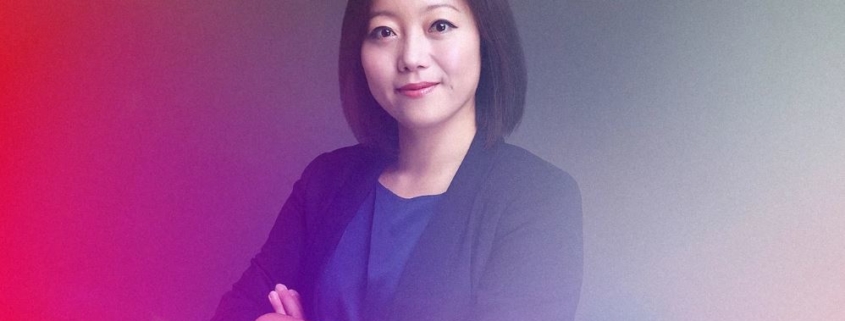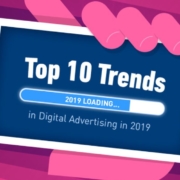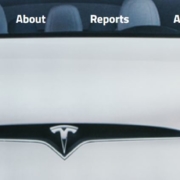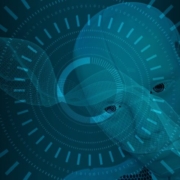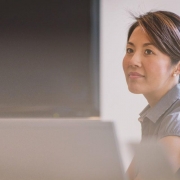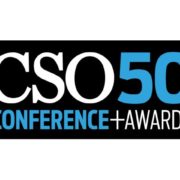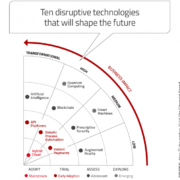How A VC Managing Partner Identifies Truly Innovative Ideas.
Amy Gu helps startups figure out an answer to that elusive question: What problem is their product solving–and can consumers live without it?
BY KATHARINE SCHWAB5 MINUTE READ
Amy Gu is the managing partner at Hemi VC, a venture capital fund that invests in early-stage companies in artificial intelligence, autonomous vehicles, cybersecurity, and biotechnology. Gu is also a judge for the 2018 Innovation by Design Awards, and I recently had the chance to sit down with her to chat about her background, her perspective on the value of design, and the biggest challenges facing design and tech right now. You can apply for the 2018 competition here.
Amy Gu: For the past 15 years, I have mostly been working with startups–running startups, coaching startups. Then, somewhere in the middle, I started doing angel investment. I enjoyed working with a lot of young entrepreneurs when they start their first company. That led me to start the fund Hemi Ventures, focusing on investing in people who are thinking about bringing something new to an industry or disrupting an industry with some unique ideas. The fund has been going for about two years, and we’re based in both Palo Alto and San Francisco. So far we have invested in 15 companies, with focuses on artificial intelligence, autonomous vehicles, cybersecurity, and biotech.
FC: How do you decide what to invest in? What does it mean for something to be innovative or unique?
AG: When we invest, we have a metric system to evaluate the companies from different perspectives. We’ll start by asking, is the technology something unique? Is there is a high technology barrier? How long have the founders been working on it?–to evaluate whether the technology is up to our standards.
The team is something we pay a lot of attention to–particularly how passionate they are. Take BioAesthetics, a skin regeneration company in New Orleans focused on generating nipples for breast cancer patients who have had mastectomies. When I met the founder, he had just graduated from Tulane with his PhD. He’d been working on it for seven years. My question was, “Why did you start this company? The product is primarily for women.”
He told me about how one night when he came back from the lab, he watched a documentary on Netflix that was talking about people who went through the transplant process. One of the biggest pain points for them was that afterward, they didn’t feel like a woman because they lacked certain body parts. He got inspired and thought, “I think what I’m doing right now can solve that problem.” Before that, he was focused on regenerating lungs.
Sometimes ideas come from a random thing in your life. But that random idea will somehow become a big idea if you have the right people with the right passion.
FC: Would you say the way startups think about the user is an important consideration for you? How do you focus young companies on being user-first and solving a problem for real people?
AG: We get involved very early on with the product design and what type of problem the product is solving. Sometimes founders come to us saying, “I have this great technology, so I must be able to solve some problem.” My advice is to slow down, take a step back, and really think about why people need something. You have to talk to people, talk to users, to really figure out what their biggest pain point is.
The comparison I use is, are you inventing something like a vitamin–where people can eat it every day but if they don’t they’re still going to be okay–or are you inventing something like a cancer drug, where people have to eat it every day or they won’t be able to survive? My question will always be to think about this situation. I people don’t use your product, will they still be okay? Most times founders will say, “they’re fine for now.” They won’t be able to sell the product. People don’t desperately need it.
I spend a lot of time personally brainstorming with the founders and pushing them to find the exact use case they should focus on in the beginning. All early-stage companies should think about this day and night.
FC: What is good design?
AG: The necessity of the product is most important. We have water, air, electricity every day. Those are really good products. Without that, our lives would be completely different. It’s rare to see. It’s not an easy thing to work on. Our goal is to look for the founder who will be able to design those ideas and make it happen.
For example, what Space X is doing is awesome–no one would be able to make it to Mars in the next 50 years. That for me is something that can open your eyes and make you say, “Finally! I’ve been waiting for so long.”
I do think in the business world creativity is much needed. It’s very difficult because most times it’s numbers-driven. People focus on revenue and profit. But I always think those are the outcomes of creativity. I try to bring a lot of creativity to my work. We’re always thinking about what we can do differently, to bring something unique to the table. So far that’s something I’m very proud of with our fund.
FC: How did the recent news about a self-driving car killing a pedestrian impact the way you’re thinking about developing autonomous vehicle technology?
AG: I think it’s very sad. I think Uber did the right thing to immediately stop all operation of autonomous vehicles nationwide.
When there’s new technology, there is always new risk. The top questions on my mind are about what we can do as technologists to reduce the risk as much as possible. We talk about, for example, the accuracy: How much accuracy should be there before the car is on the road? Or speed limits: Should there be a speed limit on how fast the car can go, so that if something goes wrong it’s not a life-threatening situation? Startups need to think about it, big companies should think about it, regulators should think about it. I hope this will help improve the industry’s mind-set rather than competing to see who can get the first car on the road.
FC: What is the biggest challenge facing design and technology startups today? What are you worried about in the next five years?
AG: For me, I never worry about technology. There are always people working on things in different fields, in different research labs. I think the problem is realizing that technology doesn’t exist by itself, that it doesn’t stand alone. There’s a whole society, a whole ecosystem related to it. So how to design a technology or product or company that will be able to exist in society without harming other parts of the world, that will be able to live well within the environment? That is always my biggest concern.

